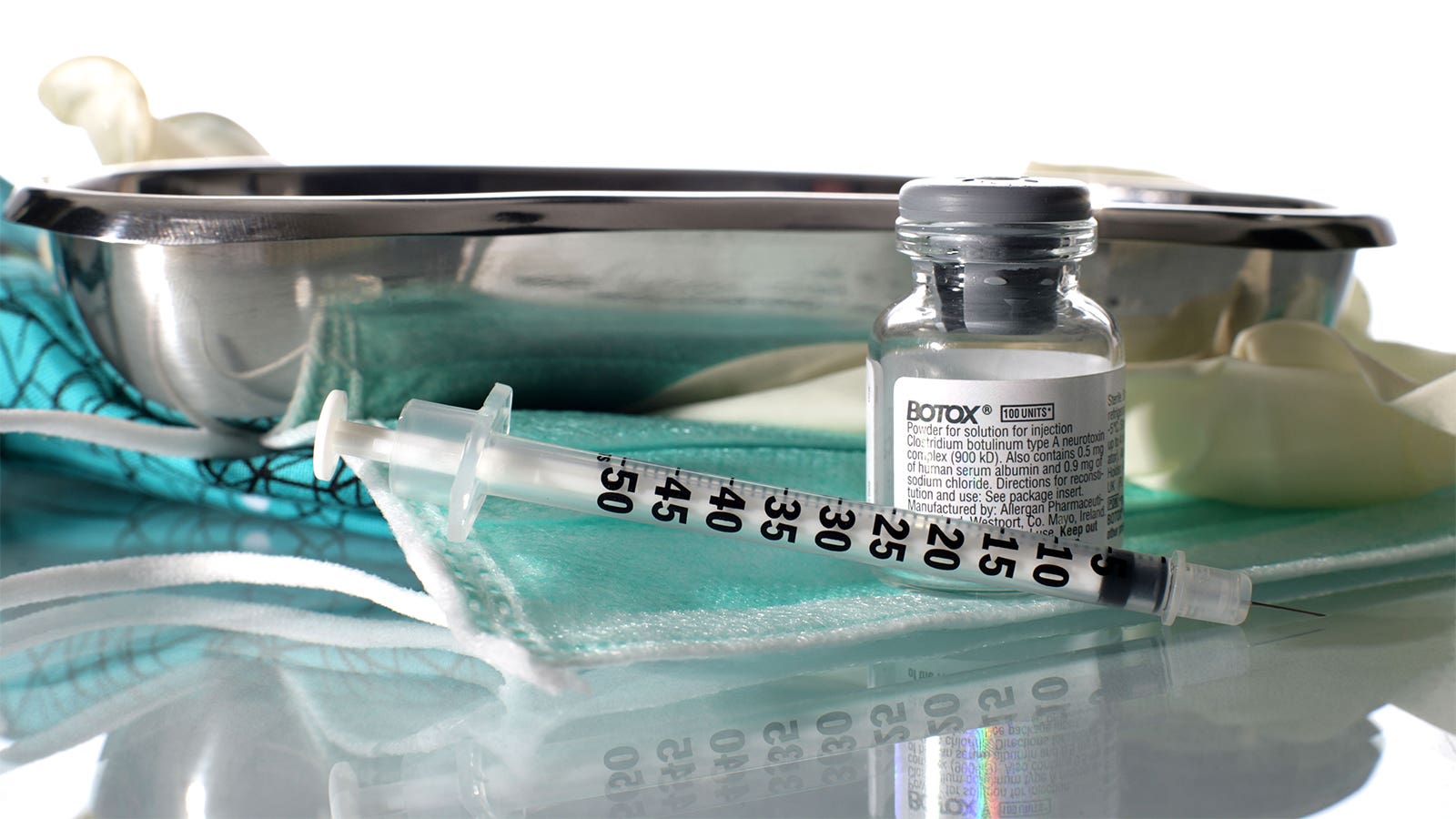— “Study represents an important step forward in the field,” editorialist says
by
Tara Haelle
December 22, 2023
Botulinum toxin type A (Botox) injections in the rectum reduced episodes of fecal incontinence and urgency, a randomized controlled trial showed.
Among nearly 200 patients in a modified intention-to-treat analysis, the mean number of fecal incontinence and urgency episodes per day in the Botox group decreased from 1.9 at baseline to 0.8 at 3 months after the injections compared with a decrease from 1.4 to 1.0 in the placebo group, with a baseline-adjusted mean group difference of -0.51 (95% CI -0.8 to -0.21, P=0.0008), reported Anne-Marie Leroi, PhD, of Rouen University Hospital in France, and colleagues.
Patients who received the Botox injections also reported greater improvements in quality of life and delay to postpone defecation, as well as a better general impression of the treatment, compared with patients who received the saline injection placebo, they noted in Lancet Gastroenterology and Hepatology.
The study appears to be the first randomized controlled trial to evaluate the potential for botulinum toxin injections to treat fecal incontinence and urgency, a condition that affects an estimated 8.3% of U.S. adults, the authors wrote. Only two previous case series and one case report have reported on these injections for fecal incontinence.
“New treatments are required for a field that has seen little meaningful therapeutic progress in 30 years and has had few adequately powered high-quality randomized controlled trials to inform its evidence base,” wrote Charles H. Knowles, MBBChir, PhD, of Queen Mary University of London, in an accompanying editorial. This trial delivered “the largest fecal incontinence treatment effect observed from any comparable sham-controlled trial,” he noted.
“Although there are some interpretive limitations resulting from the established general frailty of bowel diaries and imbalance in the primary outcome measure at baseline, this study represents an important step forward in the field, not only because it may make a new therapy available to patients, but also because it helps challenge a dogma that has consistently underplayed the importance of the rectum in the pathophysiology of fecal incontinence,” Knowles wrote.
He noted the similarities in therapeutic effect with botulinum toxin injections for overactive bladder and concluded “that [botulinum toxin type A] rectal injection therapy will rapidly gain traction with both physicians and surgeons for patients with a predominantly urge phenotype who have not responded to first-line therapies and might prefer a low-risk endoscopic treatment to trans-anal irrigation or sacral neuromodulation.”
The double-blind study included 96 patients (mean age 61.4, 92% women) who were randomly assigned to receive intrarectal injections of 200 units of Botox and 95 patients (mean age 62.1, 92% women) who received intrarectal saline injections as a placebo from November 2015 to November 2020. The participants all had at least one urgency or fecal incontinence episode per week for at least 3 months and had previously undergone conservative or surgical treatment at one of eight French specialist hospitals that did not resolve their symptoms.
The researchers defined an urgency episode as “a sudden need to rush to the bathroom to empty one’s bowels.”
Leroi and colleagues used the composite endpoint of combined incontinence and urgency episodes for the sake of achieving statistical power, to ensure they addressed urgency as a therapeutic target, and because fecal incontinence alone may not adequately represent urgency.
“Indeed, the inability to postpone defecation frequently results in restrictions on patients leaving home, with strict planning of access to toilet facilities, as some patients have no or only a few fecal incontinence episodes,” they wrote.
Each patient received 10 initial injections at various submucosal sites within the rectum from a sclerotherapy needle during flexible sigmoidoscopy, unsedated, and then a final injection at the first injection site to flush remaining fluid. The intervention injections were 1 mL of Botox diluted in saline.
The primary endpoint was assessed using 21-day patient bowel diaries leading up to 3-month follow-up appointments. At the 3-month visit, a 50% or greater reduction in the number of fecal incontinence and urgency episodes per day was noted in 72% of patients in the Botox group versus 46% of those in the placebo group (P=0.0001).
A therapeutic effect persisted at 6 months, when the intervention group had an average 0.38 fewer daily fecal incontinence and urgency episodes than the placebo group (P=0.03). At this follow-up, 76% of Botox patients and 43% of placebo patients found the injection beneficial or useful, and 76% and 37%, respectively, reported the injection improved their quality of life (P<0.0001 for both). A similar proportion of patients in each group said they would ask for another injection.
No serious adverse events occurred. Constipation, reported by 40% of participants in both groups, was the most common adverse event. At 6 months, patients in the placebo group could choose to receive a Botox injection in an open-label extension phase.
They said that some improvement in the placebo group was likely due to a placebo effect: “the well-recognized positive evolution of functional digestive symptoms after any therapeutic intervention, even simulated.”
Disclosures
The study was funded by the French Ministry of Health.
Leroi reported consulting for Medtronic. Co-authors reported relationships with AbbVie, Coloplast, Convatec, Enterra Medical, Gleamer, IBSA, Ipsen, Janssen, Kyowa Kirin, Laborie, Lilly, Medtronic, MSD, Naturex, Takeda, Viva Healthcare and Wellspect.
Knowles reported relationships with Medtronic, Exero Medical, Enteromed, and Cook MyoSite. Knowles also holds anal fistula instrument patents with JEB Medical, is a shareholder in and the chief marketing officer for Enterika Ltd, and is a founding shareholder and patent holder for Amber Therapeutics Ltd, which is developing technology with potential future use in fecal incontinence.
Primary Source
The Lancet Gastroenterology and Hepatology
Source Reference: Leroi AM, et al “Intrarectal injections of botulinum toxin versus placebo for the treatment of urge faecal incontinence in adults (FI-Toxin): a double-blind, multicentre, randomised, controlled phase 3 study” Lancet Gastroenterol Hepatol 2023; DOI: 10.1016/S2468-1253(23)00332-1.
Secondary Source
The Lancet Gastroenterology and Hepatology
Source Reference: Knowles CH “Parsimony prevails: Botulinum toxin and the overactive rectum” Lancet Gastroenterol Hepatol 2023; DOI: 10.1016/S2468-1253(23)00355-2.





